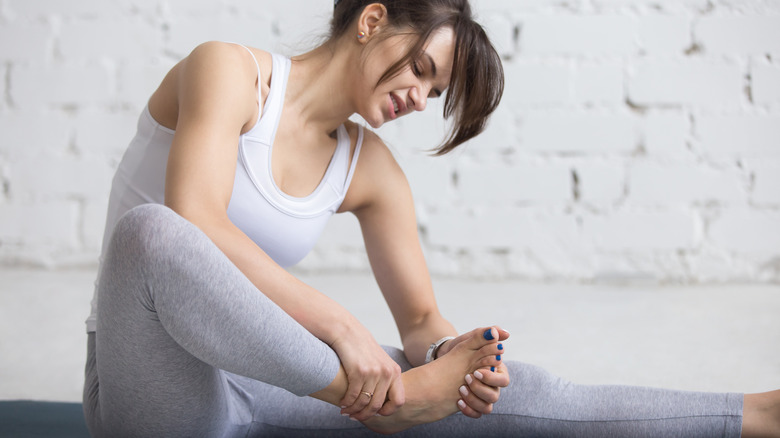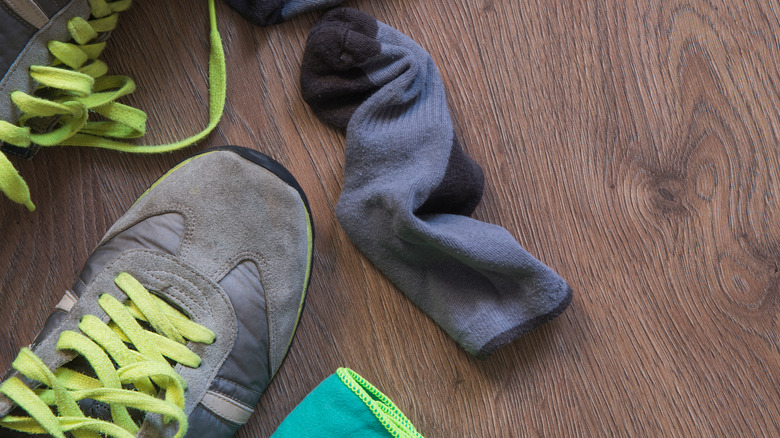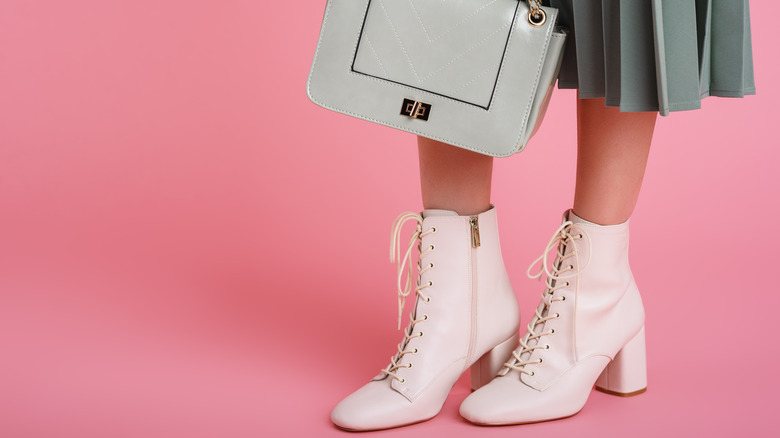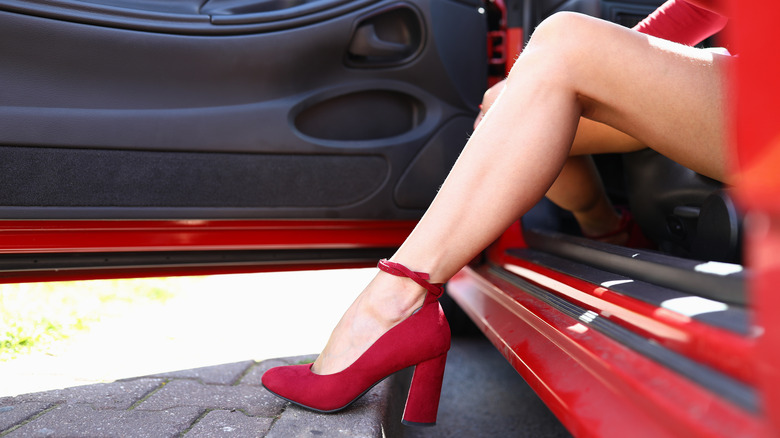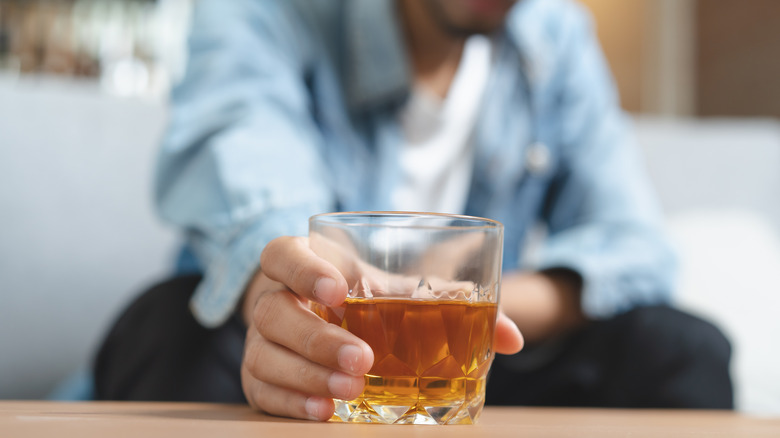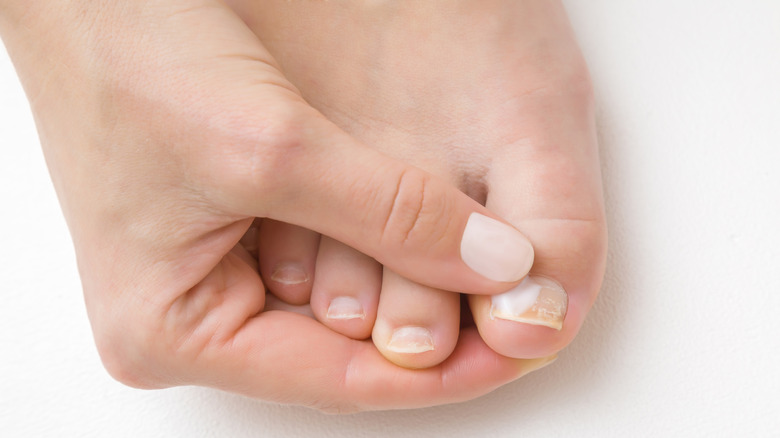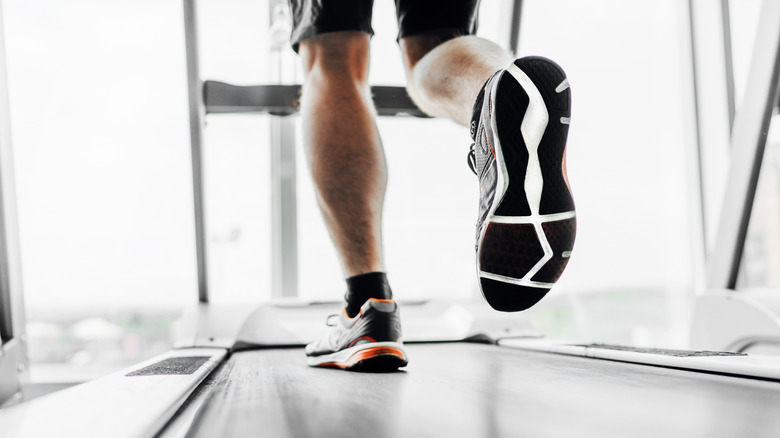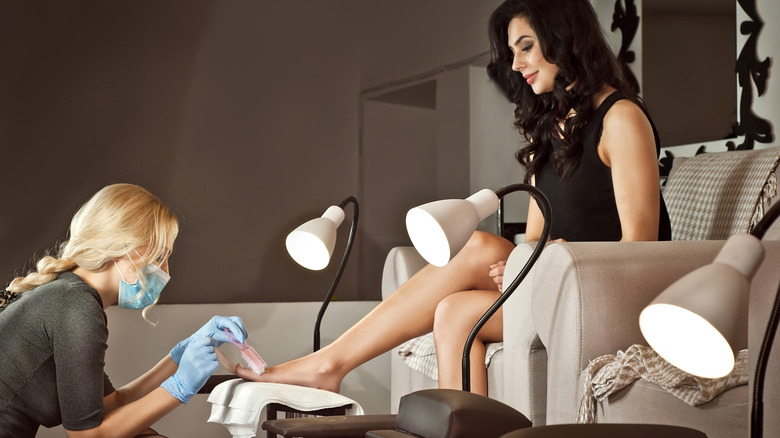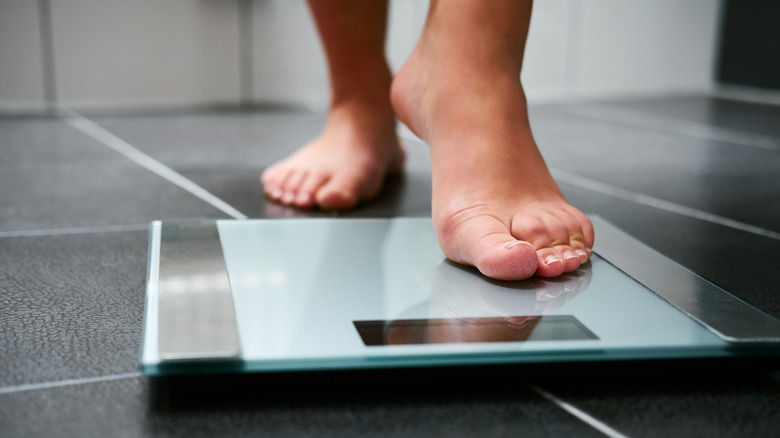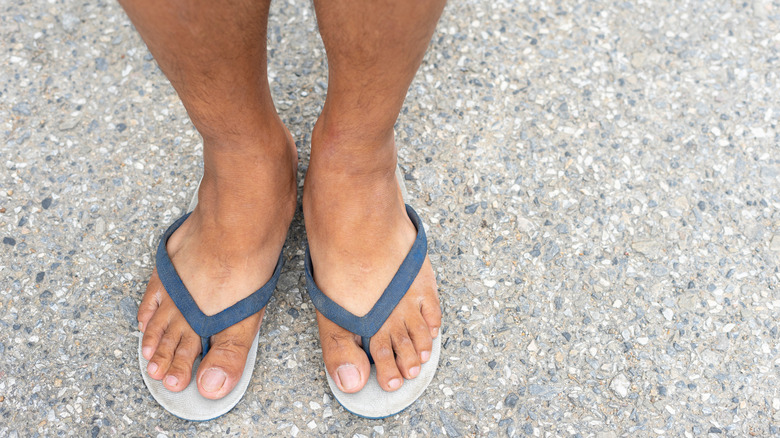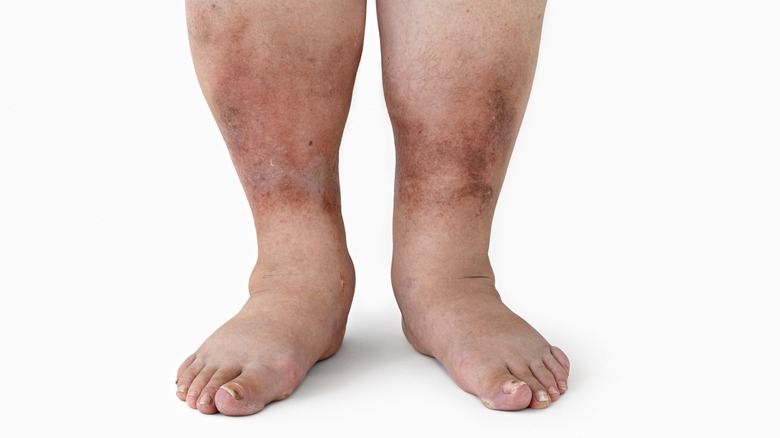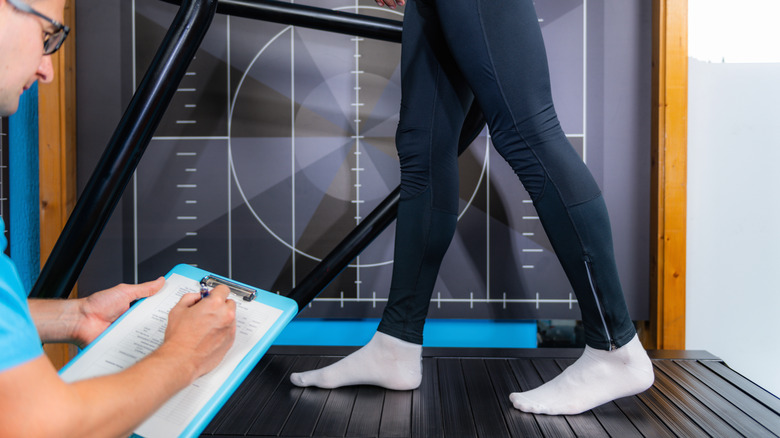14 Things You're Doing That Are Seriously Hurting Your Feet
According to a survey by the American Podiatric Medical Association (APMA), 77% of Americans have experienced problems with their feet — and half of them say it's been disabling enough to affect quality of life. "It's not surprising to see how many people are affected by foot pain, when survey results show that we view our feet as the least important body part in terms of our overall health and well-being," says podiatrist Dr. Frank Spinosa, former president of the APMA. "Our feet are literally and figuratively the furthest things from our minds."
But here's the thing: A great many of the reported problems, from heel pain to nail and toe issues, could have been avoided, or at least treated earlier by a healthcare professional, but few chose to seek out any medical help.
"The first step in fixing chronic foot pain," says orthopedic physical therapist Dr. Rick Olderman, "is to understand why you're having it," he told Prevention. So let's follow the good doctor's advice and get some insight into what you're doing so wrong that's hurting your downtrodden, tired, and aching feet.
Going barefoot or wearing sweaty socks
When you walk barefoot in public showers or locker rooms, or wear sweaty socks for far too long, you're ramping up your chances of getting athlete's foot. The contagious infection that's also responsible for jock itch and ringworm lurks in shared spaces like gyms, pool areas, and locker rooms, notes WebMD, where conditions are warm and moist. "Skin exposure to public surfaces, where other people directly contact, puts a person at a risk for contracting bacterial, viral, or fungal infections," Dr. Alisha Plotner, dermatologist at Ohio State University Wexner Medical Center, told Self.
The itchy rash looks scaly and red, and usually appears between your toes. You get it by touching contaminated surfaces, sharing towels, or by direct contact with an infected person, says the Cleveland Clinic. Though annoying and uncomfortable, athlete's foot is not a serious affliction and can be cleared up with over-the-counter anti-fungal creams and prescription medications, confirms Healthline. Applications of tea tree oil, an essential oil, have even had some success in milder cases, according to Consumer Reports.
Wearing ill-fitting shoes
You may not want to admit it, but those super-cute expensive shoes in your closet are pure agony to wear. With every step, you wince in pain as they pinch at your toes and rub your skin raw at the heels. Wearing a shoe that's too narrow or too wide, or too big or small, or just badly constructed, is one of the most common reasons for foot pain, according to Healthline.
For a good fit, there should be about a half-inch of space between the tip of your longest toe and the end of the shoe, experts say. "Your shoes shouldn't cause too much pressure on your feet and toes or cause them to crunch up," explains holistic podiatrist and fitness specialist Dr. Suzanne C. Fuchs to Prevention.
As an adult, you may think your shoe size is an unchanging number — but that's not always the case. The size and fit can be different depending on the brand and style. "Putting your foot into a size 8 is not always going to work, as you may measure larger or wider," says Dr. Richard Silverstein, podiatrist with the University of Maryland (via Parade).
Continuing to smoke
Smokers are four times more at risk of developing peripheral artery disease than nonsmokers. What does that have to do with feet, you ask? It's relevant because the condition stiffens and narrows the arteries in your legs, which makes it difficult for blood to reach your feet. And yep, that lack of blood supply means your feet will feel terrible: burning, aching, and numb — possibly forever. If left untreated, the disease may even progress to the point that amputation is necessary, warns the Cleveland Clinic.
It's uncommon for peripheral artery disease to affect people under age 50, according to WebMD, that is, unless you smoke. If you're a tobacco smoker, your risk of getting it is accelerated by 10 years. Smoking worsens the constriction and damage of your arteries, and raises the odds of getting the disease by a whopping 400%.
Early detection is really important. "[People are] waiting too long, thinking it's nothing, thinking it's old age, thinking that this spot on their foot will go away and waiting for things for so long that then we have to do really complicated surgeries and interventions to save a leg," says Dr. Michael S. Conte, professor and chief of the Vascular and Endovascular Surgery Division at the University of California, San Francisco (via WebMD).
Wearing high heels all the time
A pair of high heels lengthens the leg and changes the posture of the wearer from ordinary to va-va-voom, a 2017 study documented. But like most things in life, there's always a downside — and in the case of high heels it's foot injuries. Anyone who's worn a pair of strappy stilettos for hours knows the agony that the fashionable shoes can inflict. Bunions, hammertoe, tendonitis, and ankle sprains are just a few of the long-term consequences.
It's a lot of self-inflicted torture for fashion and beauty to be sure, but sky-high heels may cause actual harm to your feet with regular wear. "High heels create a shock wave through your body, starting at your feet and traveling up into your spine," warns Dr. Eric Baskin, podiatrist at Southern Ocean Medical Center in New Jersey (via Hackensack Meridian Health). "They can throw off your posture and gait, and even cause arthritis in the spine."
So should you give up your high heel habit? Not likely for most, but do your feet a favor and alternate the shoes with something more practical as much as you can. "Avoid wearing the same kind of shoe throughout the day," advises Dr. Jacqueline Sutera, a New York City-based podiatric surgeon. "Wear commuter shoes on your way to work, but don't wear your high heels all day," she told Prevention.
Abusing alcohol
Drinking heavily over a long period of time — or regular binge drinking — takes a serious toll on your health. Not only is alcohol abuse very likely to harm your liver and heart, but also may lead to nerve damage in your feet. It's called alcoholic neuropathy, according to Fox Integrated Healthcare, and it causes numbness, burning pain, tingling in the extremities, and sometimes debilitating mobility issues. Research shows that most chronic alcohol abusers may have some degree of neuropathy.
Dr. Sanjay Mehta, general practitioner at The London General Practice told the Daily Mail, "[The condition occurs] when certain types of nerves are damaged due to alcohol excess, resulting in decreased sensation of the hands and feet, as well as unsteadiness."
Too much alcohol in the system alters the levels of nutrients in the body and leads to vitamin deficiencies, particularly B vitamins, such as thiamine, folic acid and B12, and Vitamin E. All are needed for proper nerve function, notes Healthline.
Trimming your toenails badly
If you've ever had an ingrown nail, you know the agony of having the edge of your nail digging into your skin. The excruciating condition usually affects the big toe, and it makes the surrounding area red, inflamed, and super tender. "If an ingrown toenail causes a break in the skin, bacteria can enter and cause an infection, which will make it even more painful," says Cleveland Clinic podiatrist Dr. Georgeanne Botek. "A red, swollen, hot and very painful ingrown toenail is probably infected."
So how do you get an ingrown toenail? Sometimes it's caused from ill-fitting shoes, but the main culprit is usually a badly shaped nail. "It's almost always the way that the nail is cut or the length or shape of the nail," says Dr. Jacqueline Sutera, a New York City podiatrist via Parade. Your toenails should always be trimmed straight across, not too short, and filed smooth, advises Feet First Clinic in Toronto.
Overstressing your feet during exercise
Committing yourself fully to regular exercise has many obvious benefits to your well-being, such as improved muscle tone, strength, and cardiovascular health. Weight-bearing activities like jumping, running, gymnastics, team sports, and basically all those that you do on your feet make bones stronger, explains OrthoInfo. But bones also need some rest periods from repetitive weight-bearing exercises (hello, cross training!), to allow them to get denser and stronger. A relentless routine may lead to stress fractures, especially in your feet, reports the Mayo Clinic.
Research shows that if the bone's recovery process can't keep pace with repetitive weight loads where the stresses are greatest, such as the feet, the bone will fatigue and stress fractures can develop.
"At first, you might barely notice the pain associated with a stress fracture, but it tends to worsen with time," according to the Mayo Clinic. "The tenderness usually starts at a specific spot and decreases during rest. You might have swelling around the painful area."
Getting pedicures at a nail salon
Getting a pedicure at a nail salon is typically a blissful experience. The warm water, the relaxing foot massage, and the pretty toe polish — what's not to love? Though most salons do a great job in maintaining standards, there are times when foot spas and cutting tools may not be as sanitary as you think. If not properly sterilized, the basins and tools used may have microorganisms living on them that enter your body through cuts and abrasions in your skin.
"There are lots of possible infections that lurk inside the foot basin, including bacteria, fungi, and wart viruses," explains Dr. Michele Green, a New York-based cosmetic dermatologist (via Huffington Post). Even the sharing of cardboard nail files between clients can be a source of disease transmission, warns the Dermatology Times. Infections from foot spas may look insignificant at first, like an insect bite, according to the U.S. Environmental Protection Agency. But over time these wounds can get larger, ooze pus and require immediate medical treatment.
"There are strict guidelines on how to clean a whirlpool foot basin and how to use disposable liners for the foot basin, but the problem is that as a customer, you are not going to see most of those procedures," says Dr. Rajani Katta, professor of dermatology at Baylor College of Medicine (via Texas Medical Center). "You are really trusting that the salon is following the standard and accepted procedures."
Carrying too much weight on your feet
Just a small amount of extra weight on the body can put enough stress on muscles, joints, and tendons to create heel pain, or plantar fasciitis, notes Boston Common Podiatry. The painful condition occurs when tissues along the bottom of the foot (the plantar fascia) become inflamed. Approximately 2 million people are treated for plantar fasciitis every year, according to OrthoInfo.
Carrying extra weight on your body puts strain on the legs and feet, which often translates as chronically-aching feet. "It only takes one pound of extra weight to add 10 pounds of additional pressure on your feet and ankles," says Dr. Bob Baravarian, a board-certified podiatric foot and ankle specialist with the University Foot & Ankle Institute.
The Washington Post reports that plantar fasciitis is an injury that occurs over time, most often from those who are overweight, are runners, or who engage in high-impact exercise like dancing or jumping. The sharp heel pain and stiffness is slow to resolve, usually taking months. The typical treatment plan includes nonsteroidal anti-inflammatory drugs and avoidance of the activities that triggered the condition.
Living in flip flops
In the heat of summer, who doesn't love a great pair of flip-flops? They're easy to slip on and off, they come in lots of styles, and your feet just feel so light and unencumbered. But along with all that foot freedom, these shoes usually offer little support with their flat, skinny soles and minimal arch support or cushioning. With every strike on the hard pavement, their unsupportive structure means you're putting a lot of extra stress on your heels while walking. "Flip-flops, slingbacks and mules may be fashionable warm-weather footwear, but they may be putting your feet at risk of heel pain, including plantar fasciitis," according to Scripps Health in San Diego County.
Just how floppy is your flip-flop? One that is overly flexible is not a good choice, say the experts. "[A] red flag is a sandal that you can bend in half, or one that is not wide enough for your feet. The width of the sandal is important to accommodate your foot and any ailments such as bunions, neuromas, and hammertoes," explains Dr. Priya Parthasarathy, podiatrist at U.S. Foot & Ankle Specialists in Virginia (via Huffington Post).
Standing for too long
When you spend long hours standing, as many types of jobs require, your feet can really take a beating. The constant standing lets blood pool in your legs and feet and may ultimately result in foot pain, swelling, and possibly varicose veins. "The most common mistake people make when standing is to lock their knees. It is advised to have a little bend in the knees to take pressure off of your back and allow for better circulation to the legs," New York City chiropractor Dr. Rob DeStefano told CBS News.
Assembly-line workers, healthcare professionals, bank tellers, casino workers, pharmacy technicians, and hair stylists are just a few examples of those spending more than three-quarters of their workday on their feet, according to Industrial Safety & Hygiene News.
One simple solution to minimize discomfort: a dense, supportive mat. "If you are standing for long periods of time, anti-fatigue mats can be a welcome source of comfort for the feet," advises Dr. Martin Ellman, Mayo Clinic podiatrist in Minnesota, via Forbes.
Not treating your diabetes
As many as 50% of people living with diabetes experience diabetic neuropathy, according to the Mayo Clinic, and its favorite target is the feet. When high blood-sugar levels damage the body's nerves and blood vessels, it results in stabbing pain, tingling, and numbness in the extremities that usually starts with the feet. "This can be a serious condition, because peripheral neuropathy can lead to increased falls, cause pain, and lead to decreased quality of life," says Dr. Kevin Springer, podiatrist at The Ohio State University Wexner Medical Center, via Insider.
A breakthrough treatment using a neurostimulator, recently approved by the FDA, is showing immense progress toward improving quality of life for those with this debilitating condition. Independent studies report that 70% of patients who received the new spinal cord stimulation therapy said it provided significant relief for their symptoms compared to just 6% who got conventional prescription pills, reveals Endocrine News.
"[We] would insert two little catheter or leads to the spinal canal under digital X-ray imaging and advance those to the area where they can be most effective and then put on a band-aid and they're kind of done," says Dr. Thomas Whealton, an anesthesiology specialist who is board-certified in interventional pain management. "Patients that get relief from this, a lot of them, in some of the long-term studies that they've done and shown 80% [or] 75% reduction in their symptoms," he told WYMT in Kentucky.
Making bad food choices
The adage: "You are what you eat" is so true! Your daily diet is what fuels your body — and eating unhealthy foods regularly has been shown to increase inflammation and often leads to foot pain. "When I explain to people that your feet are connected to the rest of your body, and what you put into your body is what makes up your body, then they get it," Dr. Sherri Greene, New York City podiatrist who practices holistic foot care, told Everyday Health.
Reducing your intake of inflammatory foods and increasing foods that promote bone health is a great start. Cut out highly processed junk food and saturated fats (limit red meat), and add more fish, lean proteins, and vegetables to your plate. To reduce your risk of osteoporosis, or fragile bones, be sure to work-in the recommended daily requirement of calcium by consuming dairy and green vegetables regularly, advises Syracuse Podiatry. Pump up the Vitamin D, too, by making plenty of room for fatty fish, such as tuna or salmon, on your plate. By eating this way, you'll not only help your feet, but your overall health.
Walking the wrong way may be causing your foot pain
Did you ever think that it's simply the way you walk that's causing your foot pain? You don't usually put much thought into your stride — you just do it naturally — but the style of your gait (the way you move your body forward) may be why your feet ache at the end of the day.
"A gait analysis is all about assessing your body mechanics and solving any biomechanical problems so that you can move better and avoid injury," says Cleveland Clinic exercise physiologist Christopher Travers. "A gait analysis might even help determine the cause of an old injury."
To help your feet and walk with proper technique, you want to keep your head up and chin level and parallel to the ground, stand tall, swing your arms, and step heel-to-toe. And don't forget to tighten your core abdominal muscles as you walk, notes Healthline. Why does all this matter? Among other things, your good posture will promote deeper breathing, you'll gain core strength, and enjoy better balance.

